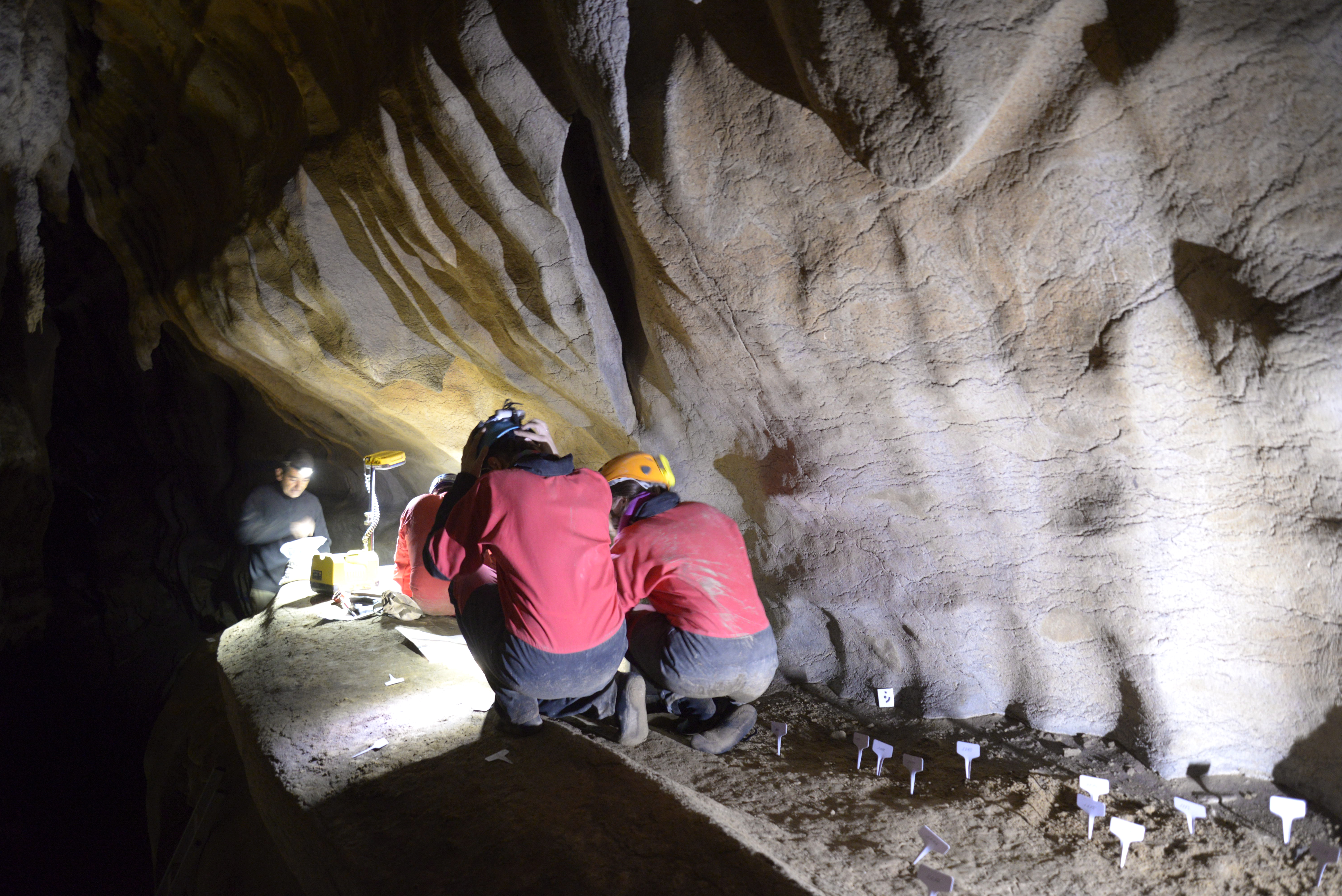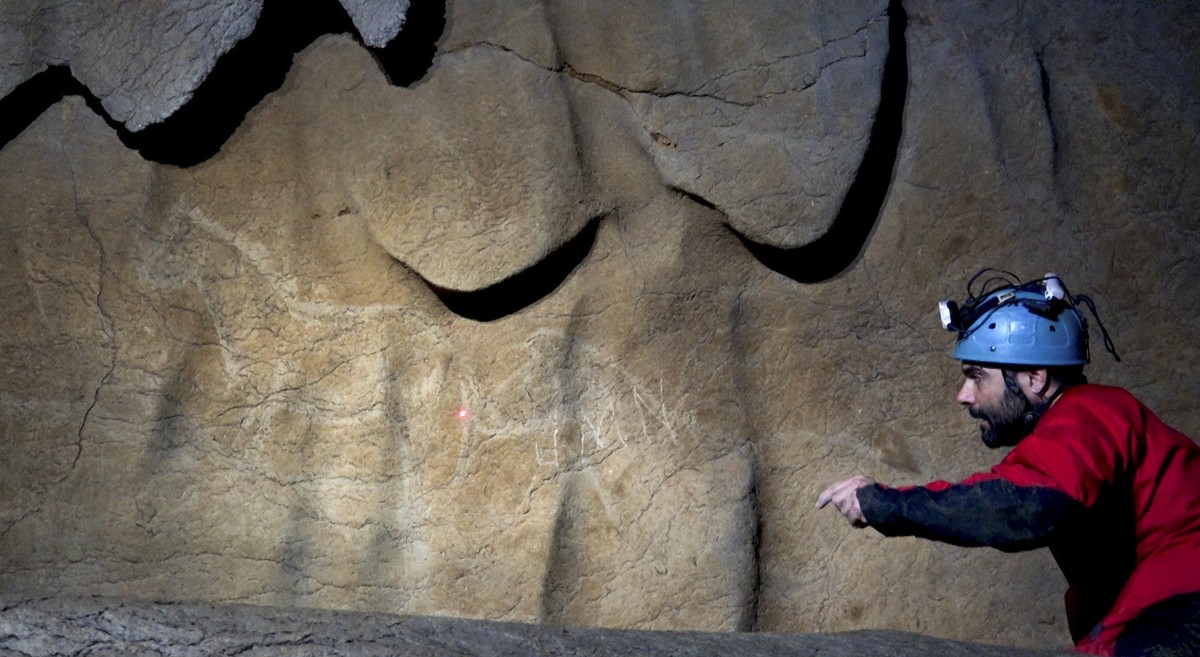Atxurra engravings were made taking into account the scenography and the public
2023/10/20 Galarraga Aiestaran, Ana - Elhuyar Zientzia Iturria: Elhuyar aldizkaria

The team led by Diego Garate Maidagan, a researcher at the IIIPC of the University of Cantabria, has demonstrated the complexity of the planning of the engravings in the cave of Atxurra (Berriatua, Bizkaia). The work has been published openly in the journal Scientific Reports with the title: Making the skills and motivations of Madelein artists appear at the bottom of the cave of Atxurra.
Garate himself found prints in 2015, along with another archaeologist who has participated in the study, Iñaki Intxaurbe Alberdi. The cave, 300 meters from the entrance and 4 meters high, presents a cornice in which the figures of the animals recorded 14000 years ago are shown: bison, goats, horses, deer… Along with them they found the stone tools and the coals of the fires they used to make the engravings.
Garate highlighted that in the published research they have now managed to analyze all the clues at once and analyze the interactions between them. “Through interaction we have understood what the action of art was. Art is not just making an image, it is a complex action: you have to enter a cave, you need special instruments, you have to illuminate, you have to represent the position of the viewer… and all that creates a scenography. Like it was a theater.”
This requires complex planning, such as fires: “They didn’t set up to make prints, but to see images from another place. In fact, the ideal place to see animals is from below. So some did art, and then those or other people went to see that work. This means that art was not a children’s game, but an act of great social importance,” Garate said.
Result of interdisciplinarity
Nor has it been easy to conduct this investigation, which has revealed the complexity of the recording process. Garate acknowledges this: “We have collaborated with a very large team, with multidisciplinary specialists, each working on a specific line. For example, to analyze the engravings Olivia Rivero Vilá and his team from the University of Salamanca have worked; the stone instruments have been analyzed by Joseba Ríos, director of the Museum of Archaeology Garaizar; Maria Angeles Medina is at the University of Alcaide Bordeaux and has been in charge of studying the coals; the interaction with the public, or the vision of the tapes, etc.
These have therefore been the main lines of research, and in each of them many researchers have participated: “Therefore, coordinating and driving forward has been a great job, but very enriching. Nowadays, archaeology is not the work of a person, but teamwork”.
Thus, they have been able to identify the tools they used to make each type of record trace, which used the anus and oak to make fires and how spatial design was, among others.
However, this contribution has not exhausted what Atxurra can provide. “It’s a treasure that’s still going to give a lot. Also, because we have an experimental cave, we can remake everything and we get a lot of information. It’s been eight years since we discovered the prints and there’s still work,” says Garate.

Gai honi buruzko eduki gehiago
Elhuyarrek garatutako teknologia





